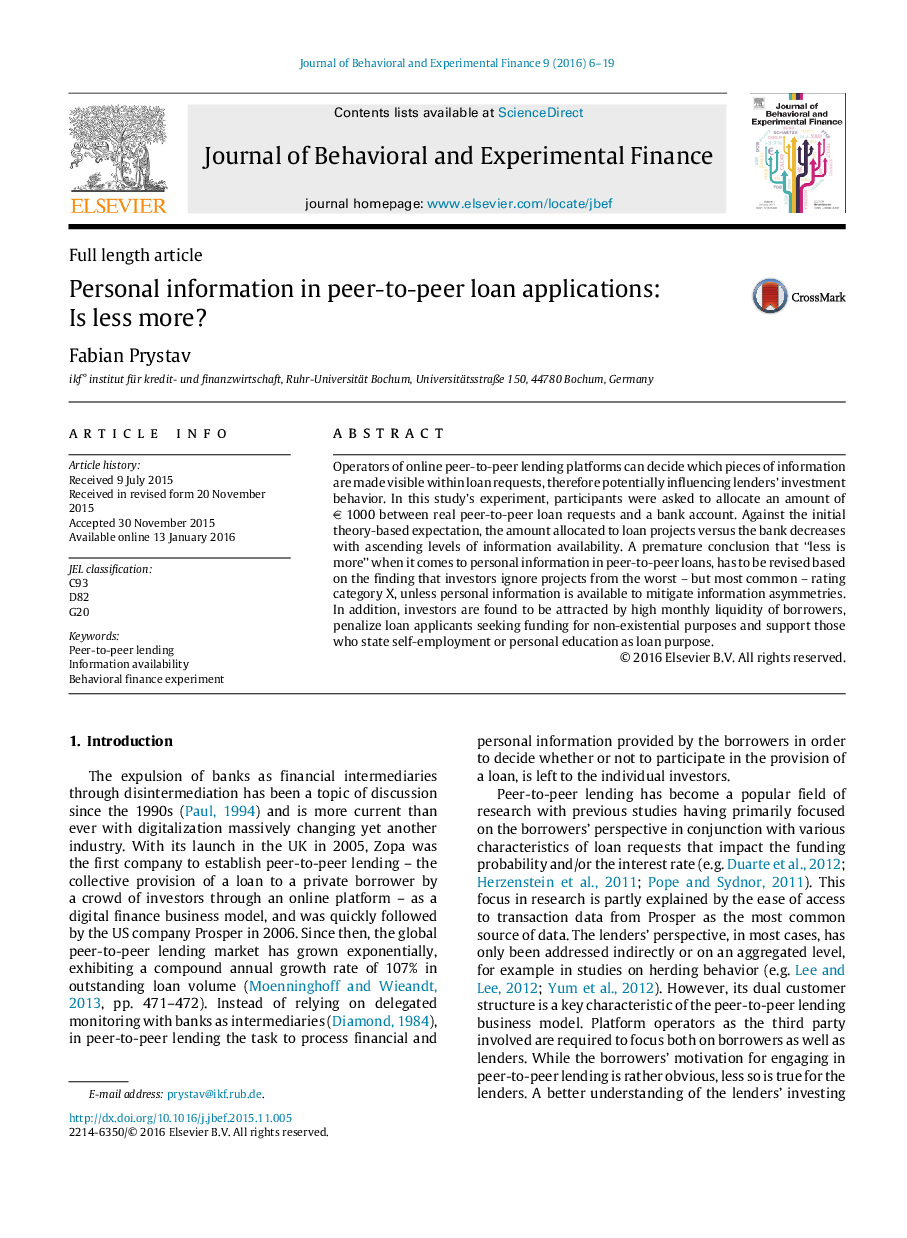| Article ID | Journal | Published Year | Pages | File Type |
|---|---|---|---|---|
| 7296680 | Journal of Behavioral and Experimental Finance | 2016 | 14 Pages |
Abstract
Operators of online peer-to-peer lending platforms can decide which pieces of information are made visible within loan requests, therefore potentially influencing lenders' investment behavior. In this study's experiment, participants were asked to allocate an amount of â¬Â 1000 between real peer-to-peer loan requests and a bank account. Against the initial theory-based expectation, the amount allocated to loan projects versus the bank decreases with ascending levels of information availability. A premature conclusion that “less is more” when it comes to personal information in peer-to-peer loans, has to be revised based on the finding that investors ignore projects from the worst-but most common-rating category X, unless personal information is available to mitigate information asymmetries. In addition, investors are found to be attracted by high monthly liquidity of borrowers, penalize loan applicants seeking funding for non-existential purposes and support those who state self-employment or personal education as loan purpose.
Related Topics
Social Sciences and Humanities
Economics, Econometrics and Finance
Economics, Econometrics and Finance (General)
Authors
Fabian Prystav,
